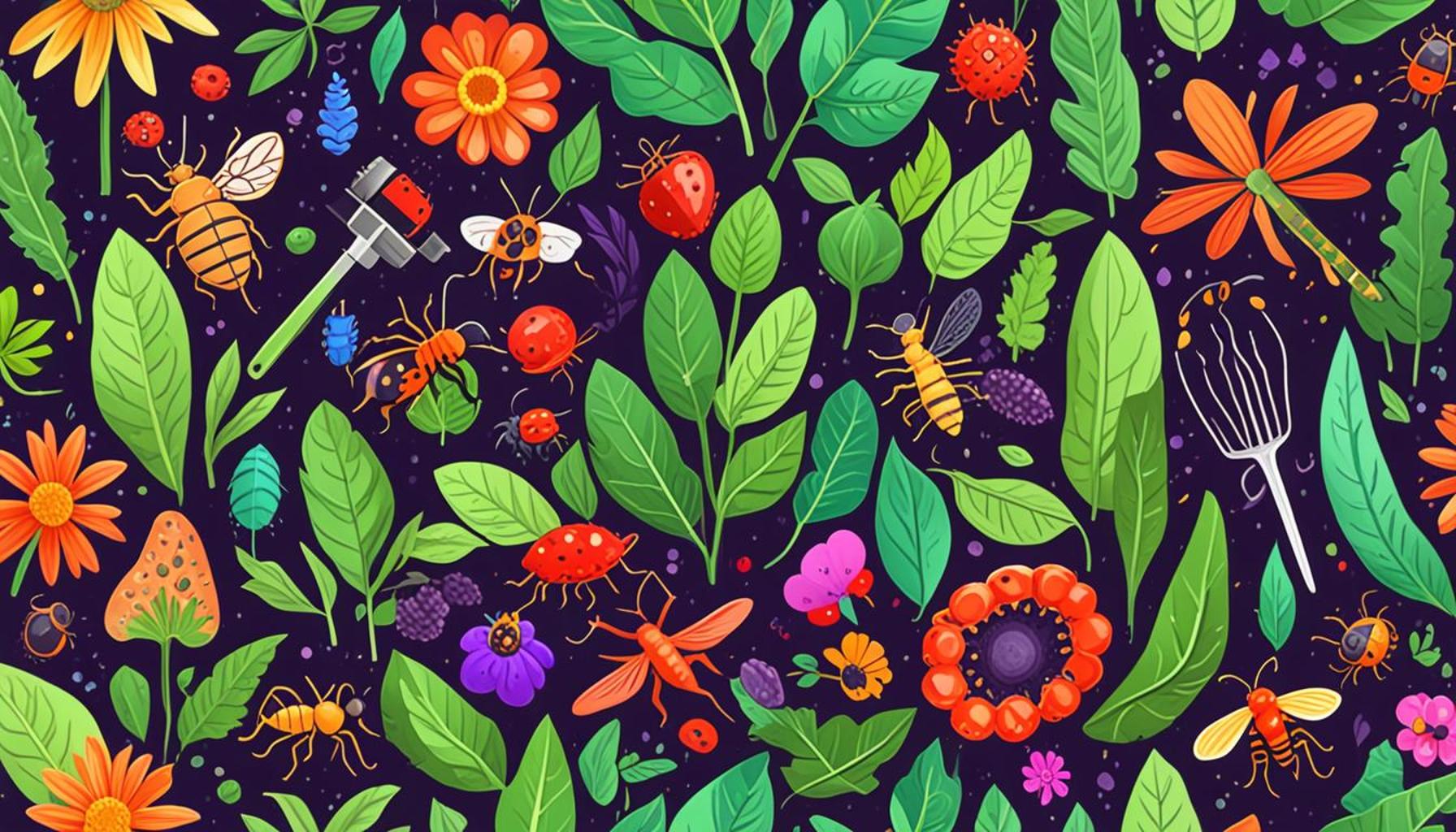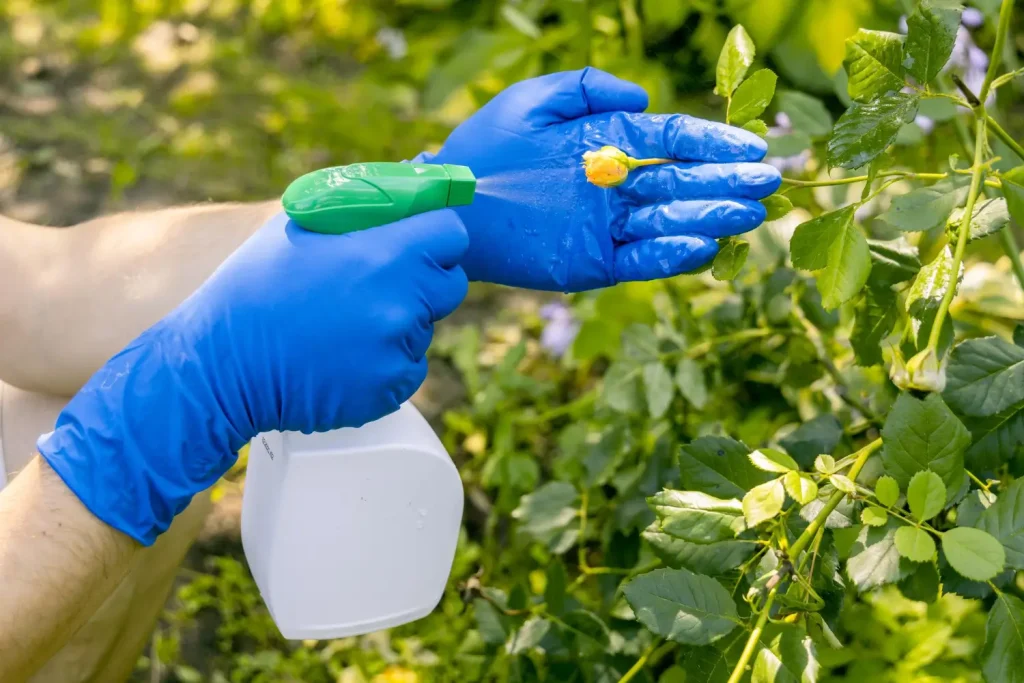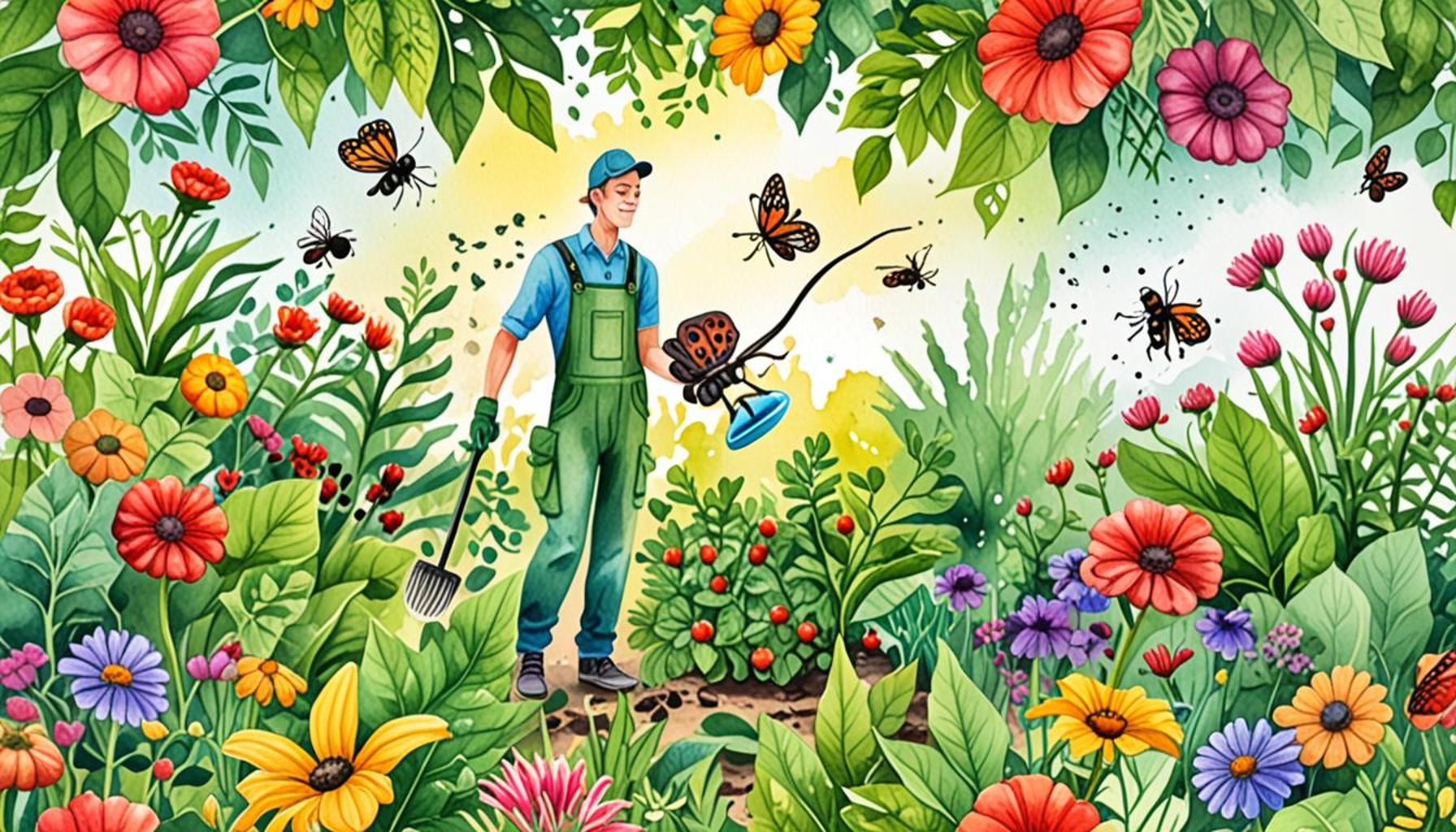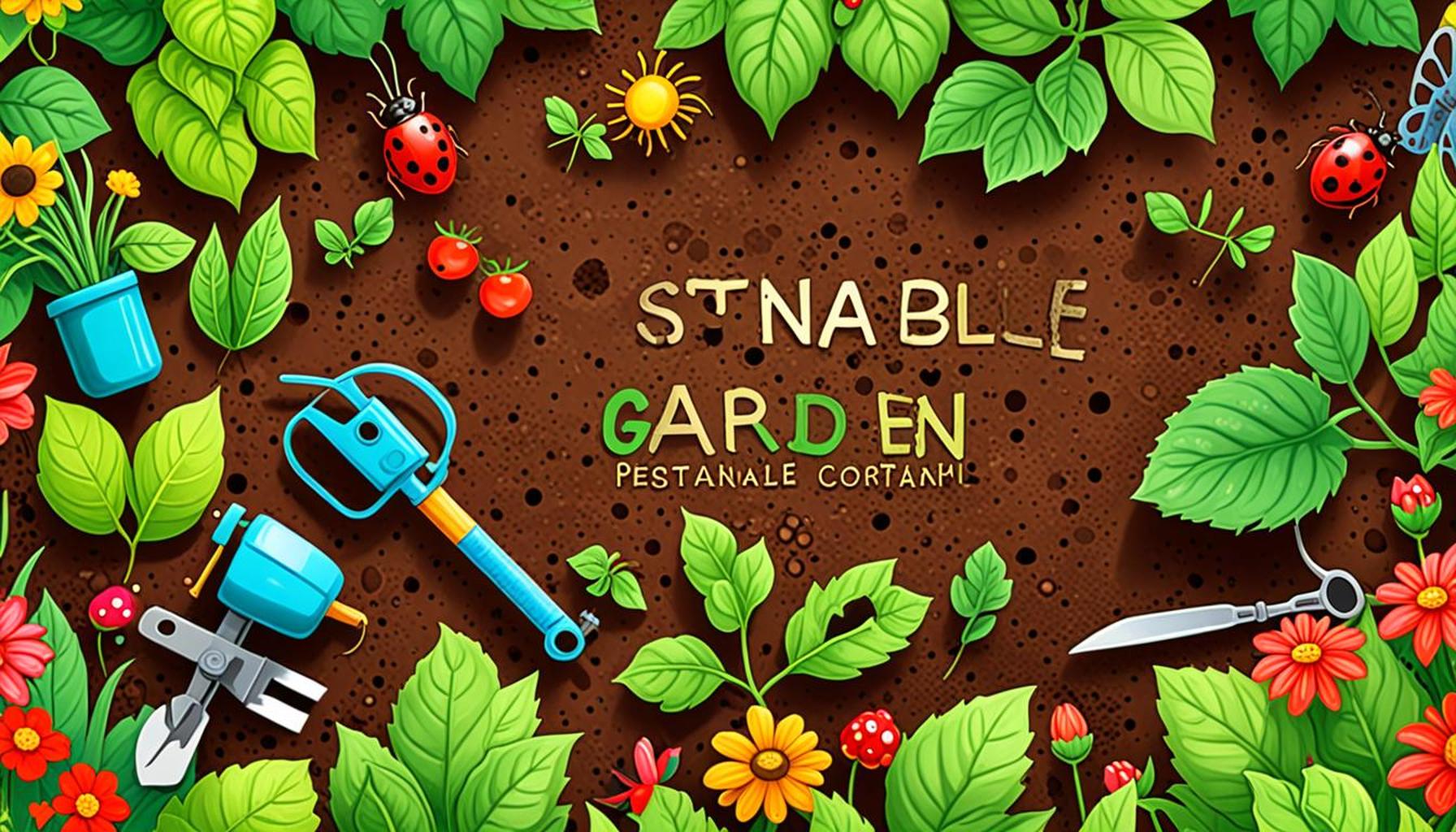Natural Pest Control Strategies for Beginner Gardeners

Exploring Natural Solutions for Pest Management
In the gentle rhythm of nurturing a garden, every component holds its importance—from the soil’s health to the vibrant hues of blooming flowers. Yet, a balanced ecosystem can be easily disrupted by pests, which are often perceived merely as nuisances. The challenge lies in cultivating a garden that thrives, without resorting to potentially harmful chemical solutions. Understanding the intricate dynamics of nature can provide an effective pathway to combat these unwelcome visitors.
Many beginners in horticulture can feel daunted by the widespread availability of synthetic pesticides. These products, while powerful, can wreak havoc on beneficial insects and soil health. For those looking to forge a more sustainable approach, natural pest control strategies present a compelling alternative. These methods not only safeguard your plants but also contribute positively to the environment by reducing toxicity and promoting biodiversity in your garden. Here are several effective approaches:
- Beneficial Insects: By inviting natural predators into your garden, you can create a balanced ecosystem. For example, ladybugs are voracious eaters of aphids, mites, and other soft-bodied pests. Lacewings, often called “aphid lions” in their larval stage, also consume harmful insects on your plants. Utilizing insect hotels or creating a pollinator-friendly space can actively encourage these beneficial species to settle into your garden.
- Companion Planting: This technique involves planting certain crops in proximity to each other to enhance growth and deter pests. Marigolds, for instance, are known for their ability to repel nematodes and various other insects, making them an ideal companion for vegetables such as tomatoes and peppers. Similarly, planting basil near tomato plants can boost flavor and repel whiteflies, demonstrating the synergistic relationships that exist within plant communities.
- Homemade Remedies: Crafting your own pest solutions can be both fulfilling and effective. Simple soap sprays can eradicate aphids and spider mites by suffocating them. Combine a few drops of liquid dish soap with water in a spray bottle for a gentle yet lethal concoction. Garlic, on the other hand, can be made into a potent repellent due to its strong scent, which deters a variety of pests. Blending garlic cloves with water and straining the mixture creates a natural spray rich in pest-repelling properties.
- Physical Barriers: Sometimes the simplest solution is the most effective. Using physical barriers such as row covers or insect netting acts like a fortress, preventing pests from reaching your plants while allowing light and moisture to penetrate. This method is particularly useful in the early spring when young plants are most vulnerable.
Adopting these strategies signals a commitment to sustainable gardening practices. By fostering a healthier ecosystem through natural pest management, you not only cultivate resilience in your plants but also enhance your overall gardening experience. As you step into this enriching journey, integrating natural pest control strategies can yield remarkable results—ensuring your garden blossoms beautifully while nurturing the environment around you.
LEARN MORE: Click here to enhance your plant selection skills
Embracing Nature’s Defenders: Beneficial Insects
One of the most effective natural pest control strategies involves harnessing the power of beneficial insects. Many gardeners underestimate the vital role these tiny allies play in maintaining a balanced ecosystem. By attracting these beneficial species to your garden, you create a fortress against harmful pests without resorting to chemicals.

For instance, the ladybug, celebrated for its vibrant red color and black spots, is not merely a charming addition to your garden; it can consume an astonishing number of pests—up to 5,000 aphids in its lifetime. Similarly, predatory wasps lay eggs within or on host insects, eventually leading to the demise of pests such as caterpillars. This natural predation helps keep pest populations in check and promotes healthy plant growth.
To encourage these beneficial insects, consider implementing the following strategies:
- Create a diverse planting scheme: Plant a variety of flowers and vegetables that bloom at different times throughout the season. A diverse environment attracts a spectrum of beneficials, ensuring that there are always food sources available, whether in the form of pollen or nectar.
- Provide shelter: Insect hotels and native plant shelters can offer refuge for beneficial insects. For example, leave sections of your garden wild with native plants and tall grasses to create habitats for predatory insects.
- Avoid broad-spectrum insecticides: These chemicals don’t discriminate between good and bad bugs. Instead of reaching for conventional pesticides, try natural alternatives or handpicking visible pests when necessary.
Utilizing Companion Planting for Natural Pest Control
Companion planting is another strategic approach that beginner gardeners can employ to combat pests and boost plant health. The right plant combinations can enhance growth, deter unwanted insects, and even attract beneficial ones. For example, the classic combination of tomatoes and basil is not just a culinary match made in heaven; basil effectively repels insects like whiteflies and enhances the flavor profile of tomatoes.
Incorporating aromatic herbs such as mint or rosemary can also discourage common pests while providing delightful scents and additional culinary delights. Moreover, planting marigolds alongside vegetables can act as a deterrent to nematodes and various pests, infusing your garden with vibrant colors and incomparable beauty.
Engaging in these practical techniques not only promotes biodiversity but also fosters resilience within your garden ecosystem. Each planting decision can have a rippling effect, enhancing the quality of your soil and attracting a plethora of beneficial insects. As you refine your skills as a gardener, embracing these natural pest control strategies will undoubtedly enrich your gardening journey.
| Strategy | Advantages |
|---|---|
| Companion Planting | Enhances growth while naturally deterring pests through alternative plants. |
| Beneficial Insects | Encourages a balanced ecosystem where predatory insects help control pest populations. |
| Homemade Sprays | Utilizes simple ingredients like soap and water to disrupt pests without harming beneficial creatures. |
| Crop Rotation | Reduces pest buildup and improves soil health, which leads to more productive plants. |
Understanding these natural pest control strategies provides beginner gardeners with practical methods to maintain a healthy garden without harsh chemicals. Implementing techniques such as companion planting can not only deter pests but also foster a thriving biodiversity. Additionally, attracting beneficial insects serves a dual purpose; it enhances pollination while implementing a natural pest control mechanism. By employing homemade sprays, novice gardeners can effectively combat pesky critters with minimal impact on their plants and the environment. Moreover, the practice of crop rotation not only helps in managing pest presence but also promotes soil fertility and overall garden health. These organic approaches represent a sustainable path for those venturing into gardening—an ideal way to begin your green journey.
DISCOVER MORE: Click here to learn about effective soil preparation
Implementing Cultural Controls for Pest Management
Another cornerstone of natural pest control strategies involves implementing cultural controls, which are practices aimed at creating an environment that is less conducive to pest infestations. These methods not only help in managing pests but also contribute to sustainable gardening practices and healthier plants over time.
Crop rotation is one of the most effective cultural control methods available to gardeners. By changing the location of certain crops each season, gardeners can interrupt the life cycles of pests and diseases that may be lingering in the soil. For example, planting tomatoes in a different area each year can prevent the buildup of soilborne pests and diseases like tomato blight, safeguarding the crop’s health.
Furthermore, ensuring that your soil is healthy by regularly incorporating organic matter can boost plant resilience. Healthy plants are better able to withstand pest pressures. Conducting soil tests can help determine nutrient needs, allowing you to tailor your compost and amendments effectively.
Another important strategy is to practice proper sanitation. Keeping your garden free from debris, infected plant material, and weeds can significantly reduce pest habitats. For instance, aphids and spider mites thrive in cluttered gardens; hence, removing fallen leaves and dead plants can help prevent their establishment.
Employing Natural Repellents and Barriers
Using natural repellents and barriers is an additional method that beginner gardeners can adopt to inhibit pest access and movement. Certain plant extracts, essential oils, and homemade sprays can serve as effective deterrents. For example, a simple garlic spray can repel aphids and whiteflies, while a mixture of cayenne pepper and water can deter larger pests like rabbits and deer.
Besides sprays, physical barriers such as row covers, nets, and floating row covers can protect plants from a plethora of pests without introducing chemicals into your garden. These barriers can also provide necessary protection from extreme weather conditions, thereby promoting a healthier growing environment.
Mulching is another simple yet powerful technique. Organic mulches not only suppress weeds, which can harbor pests, but they also improve soil moisture and add nutrients as they decompose. Additionally, mulching can help create a more inviting habitat for beneficial insects that act as natural pest hunters.
Monitoring and Vigilance: The Key to Effective Management
Finally, regular monitoring and careful observation of your garden are key components of effective pest management. Early detection of pest infestations allows for timely interventions before populations can explode. Gardeners should commit to inspecting plants at least once a week, looking for signs of distress or pest activity.
Keeping a gardening journal can aid in tracking pest sightings and plant health over time, enabling you to recognize patterns and make informed decisions. This level of engagement with your garden not only improves pest management but also deepens your understanding of plant ecology.
By mastering these cultural controls, natural repellents, barriers, and diligent monitoring practices, beginner gardeners will be empowered to create a thriving ecosystem that minimizes pest issues organically. As you embark on this journey, the world of natural pest control opens up avenues for exploration and discovery, enriching the overall gardening experience.
DISCOVER MORE: Click here to learn about houseplant irrigation needs
Conclusion: Embracing Natural Pest Control for a Flourishing Garden
As beginner gardeners embark on their horticultural journey, implementing natural pest control strategies can significantly shape the success and sustainability of their gardens. By embracing practices such as cultural controls, gardeners not only cultivate healthy plants but also create an ecosystem where pests are kept in check through natural means. Key strategies like crop rotation, proper sanitation, and maintaining soil health instill resilience in plants, ultimately minimizing pest pressures.
Incorporating natural repellents and barriers serves as an effective method to protect plants and deter unwanted visitors. These techniques—ranging from homemade sprays to protective coverings—are not only environmentally friendly but also allow gardeners to enjoy a bountiful yield without the reliance on synthetic pesticides. Furthermore, the practice of mulching enhances not just the garden’s aesthetics but also its ecological balance, inviting beneficial insects to thrive.
Lastly, fostering a habit of regular monitoring ensures that gardeners stay vigilant, enabling early detection and timely interventions when pest populations threaten to escalate. This ongoing engagement not only sharpens gardening skills but also nurtures a deeper understanding of the interconnectedness within the garden ecosystem.
By implementing these natural pest control techniques, beginner gardeners can cultivate a thriving, resilient garden that honors the environment while yielding plentiful, healthy harvests. The journey into organic gardening is one of discovery and growth, empowering individuals to form a more harmonious relationship with nature.


